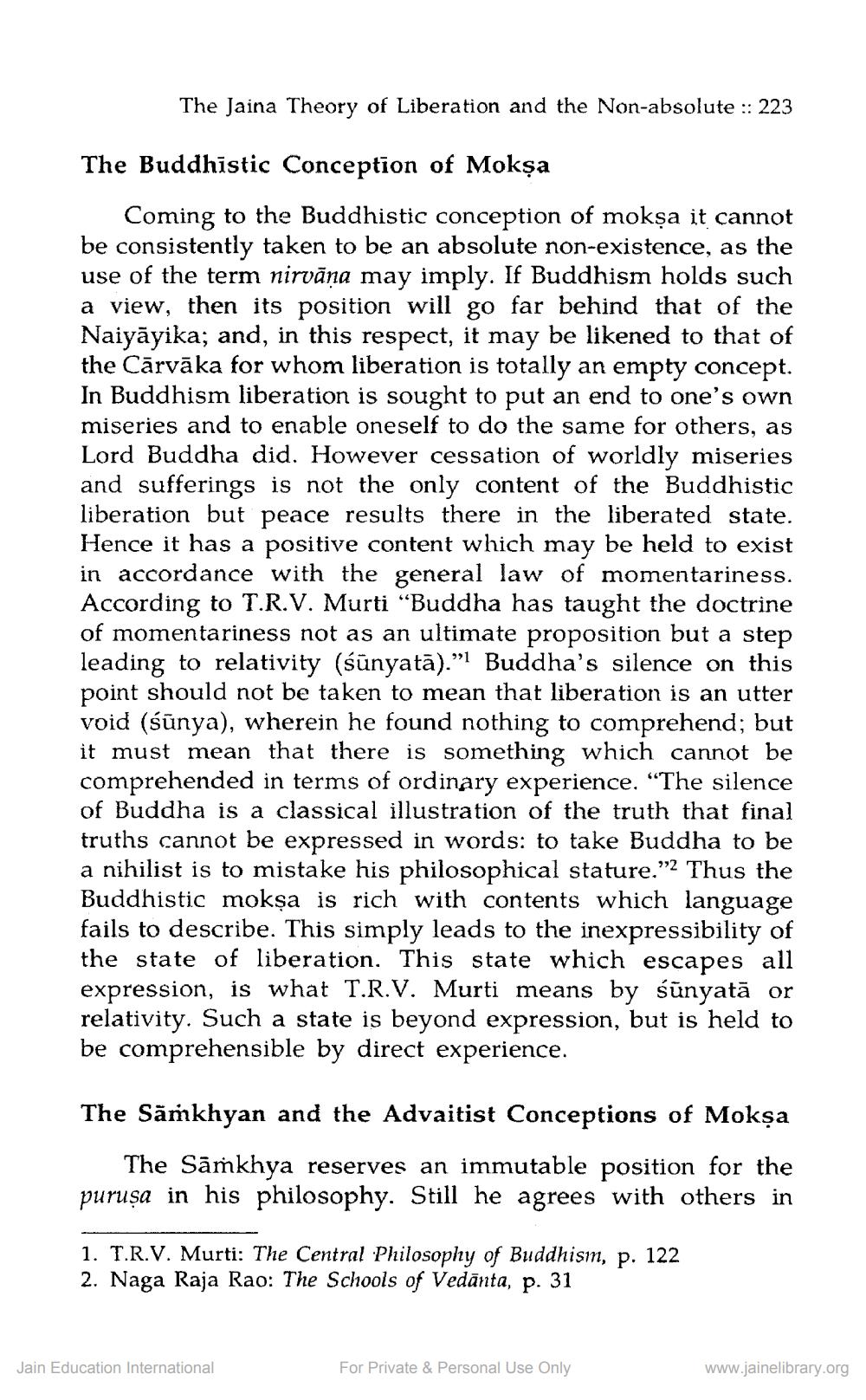________________
The Jaina Theory of Liberation and the Non-absolute :: 223
The Buddhistic Conception of Mokşa
Coming to the Buddhistic conception of mokşa it cannot be consistently taken to be an absolute non-existence, as the use of the term nirvāṇa may imply. If Buddhism holds such a view, then its position will go far behind that of the Naiyāyika; and, in this respect, it may be likened to that of the Cārvāka for whom liberation is totally an empty concept. In Buddhism liberation is sought to put an end to one's own miseries and to enable oneself to do the same for others, as Lord Buddha did. However cessation of worldly miseries and sufferings is not the only content of the Buddhistic liberation but peace results there in the liberated state. Hence it has a positive content which may be held to exist in accordance with the general law of momentariness. According to T.R.V. Murti "Buddha has taught the doctrine of momentariness not as an ultimate proposition but a step leading to relativity (sünyatā).” Buddha's silence on this point should not be taken to mean that liberation is an utter void (sūnya), wherein he found nothing to comprehend; but it must mean that there is something which cannot be comprehended in terms of ordinary experience. "The silence of Buddha is a classical illustration of the truth that final truths cannot be expressed in words: to take Buddha to be a nihilist is to mistake his philosophical stature.”2 Thus the Buddhistic mokṣa is rich with contents which language fails to describe. This simply leads to the inexpressibility of the state of liberation. This state which escapes all expression, is what T.R.V. Murti means by śūnyatā or relativity. Such a state is beyond expression, but is held to be comprehensible by direct experience.
The Samkhyan and the Advaitist Conceptions of Mokşa
The Sāmkhya reserves an immutable position for the purusa in his philosophy. Still he agrees with others in
1. T.R.V. Murti: The Central Philosophy of Buddhism, p. 122 2. Naga Raja Rao: The Schools of Vedānta, p. 31
Jain Education International
For Private & Personal Use Only
www.jainelibrary.org




